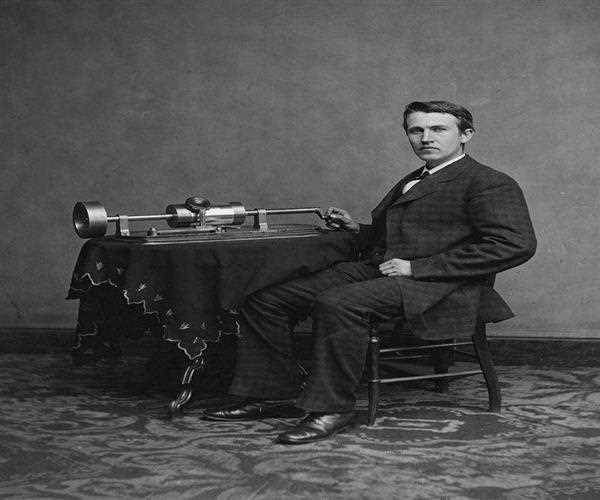The sound wave patterns are captured as physical distortions of spiral grooves engraved, etched, carved, or impressed into the surface of a revolving cylinder or disc, which is referred to as a 'record.' To replicate the sound, the surface is rotated in the same way, while a playback stylus traces the groove and is thus vibrated by it, emulating the recorded sound very weakly.
The stylus vibrated a diaphragm in early acoustic phonographs, producing sound waves that were either connected to the outside air via a flaring horn or directly to the listener's ears using stethoscope-style earphones.

Thomas Edison invented the phonograph in 1877. The graphophone was invented in the 1880s by Alexander Graham Bell's Volta Laboratory, which used wax-coated paper cylinders and a cutting blade that moved from side to side in a diagonal groove around the disc.
Emile Berliner pioneered the switch from gramophone cylinders to flattened discs with a helical groove running from the perimeter to near the center in the 1890s, coining the word 'gramophone' for disc vinyl records, which are still popular today. Changes to the turntable and its motor system, the stylus or needle, the pickup framework, and the sound and equalization systems were made over time.